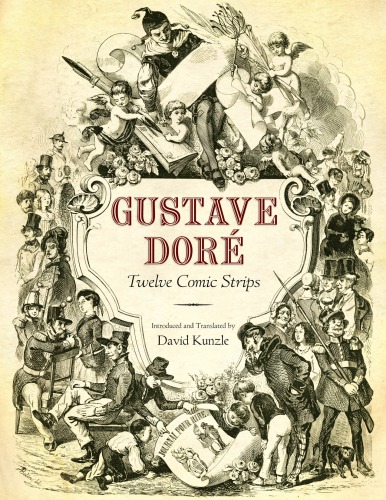

Most ebook files are in PDF format, so you can easily read them using various software such as Foxit Reader or directly on the Google Chrome browser.
Some ebook files are released by publishers in other formats such as .awz, .mobi, .epub, .fb2, etc. You may need to install specific software to read these formats on mobile/PC, such as Calibre.
Please read the tutorial at this link: https://ebookbell.com/faq
We offer FREE conversion to the popular formats you request; however, this may take some time. Therefore, right after payment, please email us, and we will try to provide the service as quickly as possible.
For some exceptional file formats or broken links (if any), please refrain from opening any disputes. Instead, email us first, and we will try to assist within a maximum of 6 hours.
EbookBell Team

5.0
80 reviewsAmong the masters of the nineteenth-century comic strip, Gustave Doré has been much neglected. For his illustrations to literary classics, he earned an unsurpassed reputation and corresponding scholarly attention. Doré himself repudiated his early work, and similarly critics and biographers have given short shrift to his beginnings as a caricaturist. These caricatures are herein rescued entirely for the first time in English by the renowned comics scholar David Kunzle.
Doré's caricature is known to a few specialists, but virtually no one has pointed out that his mastery of the comic strip particularly marks him as an entirely original figure in the post-Töpffer era of revolutionary, mid-century France. Doré, remarkably, created these comic strips when he was between fifteen and twenty-two years old, for Charles Philipon's Journal pour Rire (The Laughter Journal), virtually dominating its seven-year (1848-55) history. He also did three fairly long, separately published albums, which show him at his very best. They are consistently funny, often ludicrous, and illustrate a graphic inventiveness unmatched until the twentieth century. In these graphic stories, Doré parodies an ancient fable, the discomforts of life in the country, the perils of artistic ambition, the absurdities of mountaineering and travel, as well as the antics of schoolboys.
This book provides a context for Doré's caricatures, focusing on his comic strips in the Journal pour Rire, the character of the journal, and the three comic strip albums he created while he worked there. Kunzle's analysis reveals Doré's debts to his predecessors, Töpffer, Cham, and Nadar. None of Doré's Journal strips has ever been republished. Some of the albums were republished, reduced and incomplete, in German and French. This edition includes facsimiles of the twelve most significant comic strips and the first translation into English of the captions.